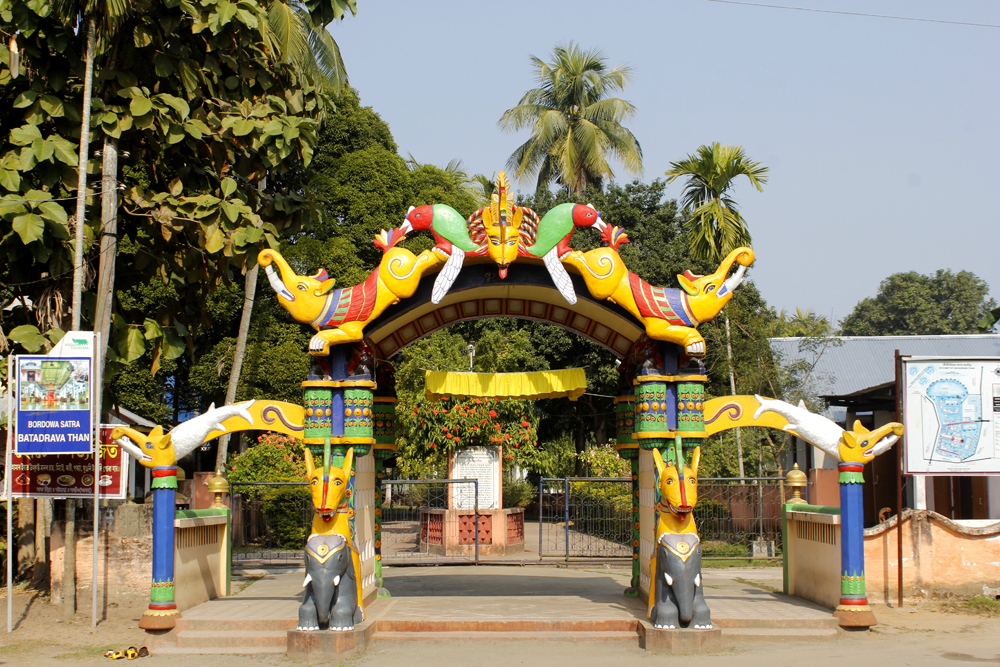January 25, 2024
Batadrava Than: A Sacred Hub of Assamese Vaishnavism
Introduction:
• Recently, an Indian politician faced restrictions while attempting to visit Batadrava Than, a revered site in the Nagaon district of Assam. This article delves into the significance of Batadrava Than, shedding light on its historical, cultural, and religious importance.
Location and Alias:
• Situated in the heart of Assam, Batadrava Than, also known as Bordowa Than, stands as a testament to the rich heritage of Assamese Vaishnavites. The temple complex holds immense religious value, being the birthplace of the esteemed Vaishnavite reformer-saint, Srimanta Sankardeva.
Founder and Origin:
• Srimanta Sankardeva, during the fifteenth century, established the first-ever Kirtan Ghar at Bordowa in 1494 AD. His mission was to propagate the neo-Vaishnavite faith, known as Ek Saran Naam Dharma, emphasizing devotion to Lord Krishna through prayer and congregational chanting.
Architectural Marvel:
• Enclosed by a brick wall and featuring two entrances, Batadrava Than is a complex comprising various structures. The Kirtan Ghar, initially constructed with temporary materials by Sankardev himself, is the prayer house. Connected to it is the Manikut, dedicated to housing sacred texts and manuscripts.
Diverse Campus Structures:
• The temple campus includes Natghar (Drama hall), Alohighar (Guest room), Sabhaghar (Assembly hall), Rabhaghar (Music room), Hatipukhuri, Aakashi Ganga, Doul mandir (festive temple), and more. A mini museum within the premises showcases historical articles and artifacts, providing visitors with a glimpse into the region’s rich cultural history.
Cultural Extravaganza – Doul Mahotsava:
• An annual highlight for devotees is the grand festival “Doul Mahotsava” (Holi) held at Bordowa. This celebration adds vibrancy to the spiritual atmosphere and attracts numerous worshippers.
Philosophy of Srimanta Sankardeva:
• Sankardeva’s teachings were rooted in principles of equality, fraternity, and the rejection of caste differences and orthodox Brahmanical rituals. The Ek Saran Naam Dharma advocated worship through bhakti (devotion) to Lord Krishna, emphasizing prayer and chanting over idol worship.
Neo-Vaishnavite Movement and Sattras:
• Sankardeva’s efforts gave rise to the Neo-Vaishnavite reformist movement, leading to the establishment of monastic institutions known as Thans/Sattras. These institutions, founded in the 16th century, became centers for religious, social, and cultural reforms across Assam.
Legacy and Worship Through Art:
• Today, the Sattras continue to propagate Sankardeva’s unique approach of “worship through art,” incorporating music (borgeet), dance (sattriya), and theatre (bhauna) into their religious practices.
Conclusion:
• Batadrava Than stands as a cultural and spiritual beacon, reflecting the profound impact of Srimanta Sankardeva’s teachings on Assamese society. The restrictions faced by the politician only highlight the site’s significance, drawing attention to the ongoing relevance of this sacred place in Assam’s religious and cultural landscape.
January 14, 2025
January 7, 2025
January 2, 2025

